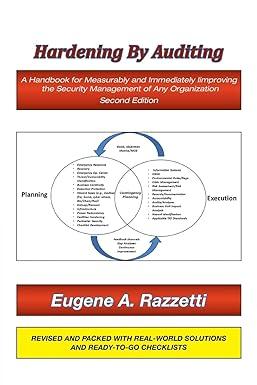Question
The Statement of Financial Accounting Standards No. 157 Fair Value Measurements, defines fair value, establishes a framework for measuring fair value in generally accepted accounting
The Statement of Financial Accounting Standards No. 157 Fair Value Measurements, defines fair value, establishes a framework for measuring fair value in generally accepted accounting principles (GAAP), and expands disclosures about fair value measurements FASB, 2016). This statement was issued due to the various definitions of fair value and he limited guidance given to apply those definitions in GAAP. Inconsistencies took place and it became increasingly complex to apply to GAAP. In developing this Statement, the Board considered the need for increased consistency and comparability in fair value measurements and for expanded disclosures about fair value measurements (FASB, 2016).
By creating a single definition of fair value, as well as creating a framework for measuring fair value, there will be an increase in consistency with fair value measurements. Using this new definition to measure the fair value of assets and liabilities should result in better information on financial statements as well as better information about the extent to which fair value is used to measure recognized assets and liabilities, the inputs used to develop the measurements, and the effect of certain measurements on earnings, or change in net assets, for the period (FASB, 2016).
A single definition of fair value will also effect how the methods of valuing a parents investment in a subsidiary, the equity method or the cost method, will be conducted. The choice of method is dependent upon the percentage ownership that the parent company has in the subsidiary company (GCU, 2016). When selecting the accounting treatment of the investment, there are certain guidelines to go by. If there is no significant influence, the investment is carried at full value with adjustments for market changes, and if there is significant influence, the investment may be carried at fair value under an irrevocable option. Both accounting treatments require the same definition of fair value to be followed in order to show consistency when accounting for investments.
Can anyone expand upon this, please?
Step by Step Solution
There are 3 Steps involved in it
Step: 1

Get Instant Access to Expert-Tailored Solutions
See step-by-step solutions with expert insights and AI powered tools for academic success
Step: 2

Step: 3

Ace Your Homework with AI
Get the answers you need in no time with our AI-driven, step-by-step assistance
Get Started


